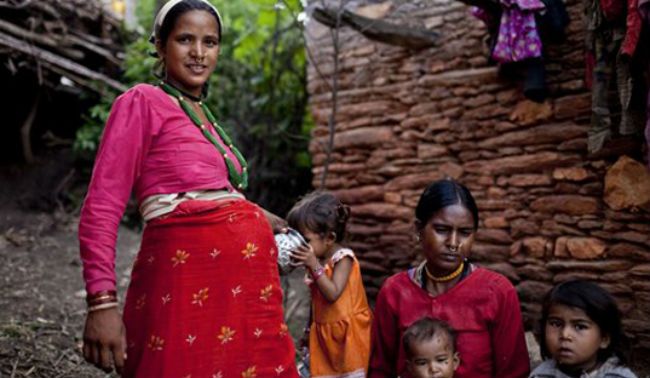Over the course of my lifetime, there have been numerous natural disasters that I remember as vividly as if they were yesterday: watching news clips on Hurricane Katrina in 2005, as well as the Pakistan earthquake that same year; the 2010 earthquake that devastated Haiti, and the 2011 Tohoku earthquake and tsunami in Japan. Nepal’s Gorkha earthquake is sadly yet another disaster I won’t forget the date it occurred, nor hearing about for the first time.
On April 26th, I was lying in bed at 5:00AM awake (I have insomnia), when a news alert popped up on the screen of my phone notifying me to the 7.4-8.1 magnitude earthquake. Though there is still debate on whether climate change is causing more earthquakes, it is clear that global warming is forcing people to move into more disaster prone regions making the devastation of cosmic events all the more horrific.

Photo: The Gates Foundation
In the following weeks, I donated money to various charity organizations working in Nepal, and read over the media as more harrowing images and stories were told of the quakes horrific impact on Nepal and in the surrounding region. Most of my concern was for the individuals who lost families, and the immediate damages to homes, schools, and infrastructure (a comprehensive summary on the quake by my colleague Christina Nunez is a good starting point for those looking to know more).
What I hadn’t considered was the upswing in child marriages post-earthquake. Despite knowing that climate change and natural disasters disproportionately affect girls and women (for more information about climate change, poverty, and gender disparity read this GC primer), I was more concentrated on thinking about maternity care, access to doctors, and school closures.
CARE, a leading organization working to end child marriage, has reported the dramatic upswing in child marriage and trafficking post-earthquake - as criminals prey on orphaned children, and parents act to protect their daughters from sexual violence by marrying them off.
Further, according to Anand Tamang, director of the Nepalese group CREHPA, which campaigns against child marriage, post quake, “Many children have lost both their parents ... they will be more vulnerable. There will be a dramatic increase in child marriage and trafficking and ... we know the situation will be much worse.”

Photo: Department of Foreign Affairs
Sexual assault against girls rises dramatically after natural disasters, particularly for those living in emergency and displacement camps. This is leading families to marry off daughters at an increasing rate. "Parents,” according to Tamang, “who have young girls will have fear in their minds and they will think the best way to ensure her safety will be to marry her." Further, other girls may be married off if families are unable to afford to keep them in school, or if both of the girls parents are dead.
In total, the quake that struck on April 25th, and the second quake that hit on May 12th, killed over 8,500 people, and was one of the deadliest natural disasters ever to hit Nepal.
Prior to the earthquake, Nepal already had a high level of child marriage. According to UN data, one in 10 girls are married by the age of 15, and four in 10 are married before their 18th birthdays. Child marriage has consequences beyond psychological trauma and decreased chances at an education, it can also lead to the chance of childbirth complications, and child brides are more likely to be victims of sexual and domestic abuse.
While the Nepalese government has been working on a national strategy to end child marriage, the quakes have disrupted this process.
Similar to many other countries, the reason for child marriage in Nepal is largely due to poverty, and is aggravated by a dowry system. The older a girl is, the more dowry families need to pay to the husband. For poor families, marrying young girls decreases the amount of dowry that has to be paid.
Child marriage is not an issue that is confined to Nepal - or regions affected by disaster, but the devastation of the earthquake has complicated and exacerbated an already difficult situation within the Himalayan country. Globally, 720 million women are married before they turn 18. And one out of three girls in the developing world will be married before their 18th birthday, and one in nine before they turn 15.
So what to do? Firstly, as global citizens, it’s critical to understand the linkage between poverty, gender, climate change, and inequality. By understanding this link, we can better campaign for positive changes as we work together towards the success of the SDGs.
But for immediate action, sign the petition in TAKE ACTION NOW to end child marriage, letting our representatives know that underage unions hurt the wellbeing of girls and women across the world!